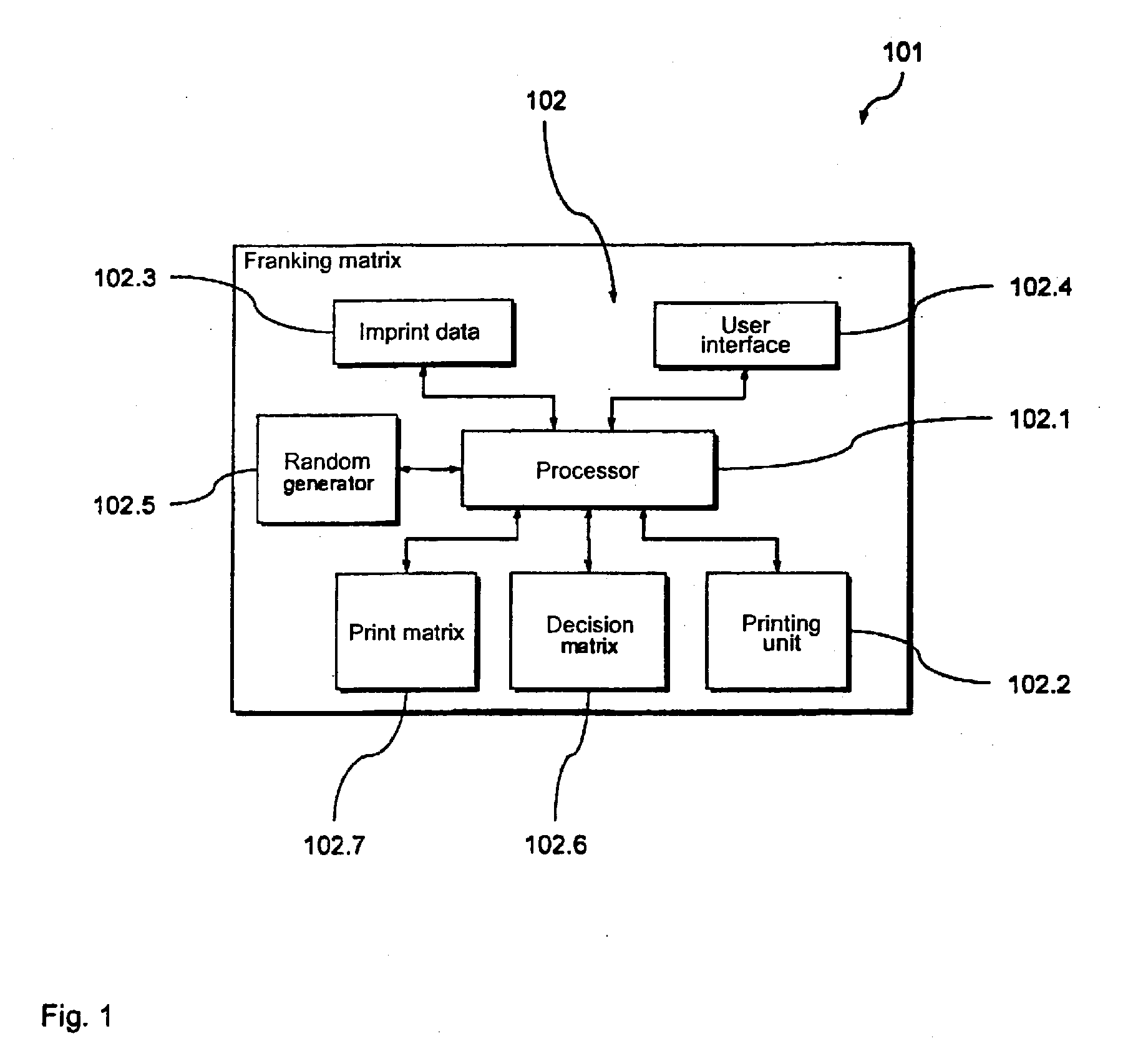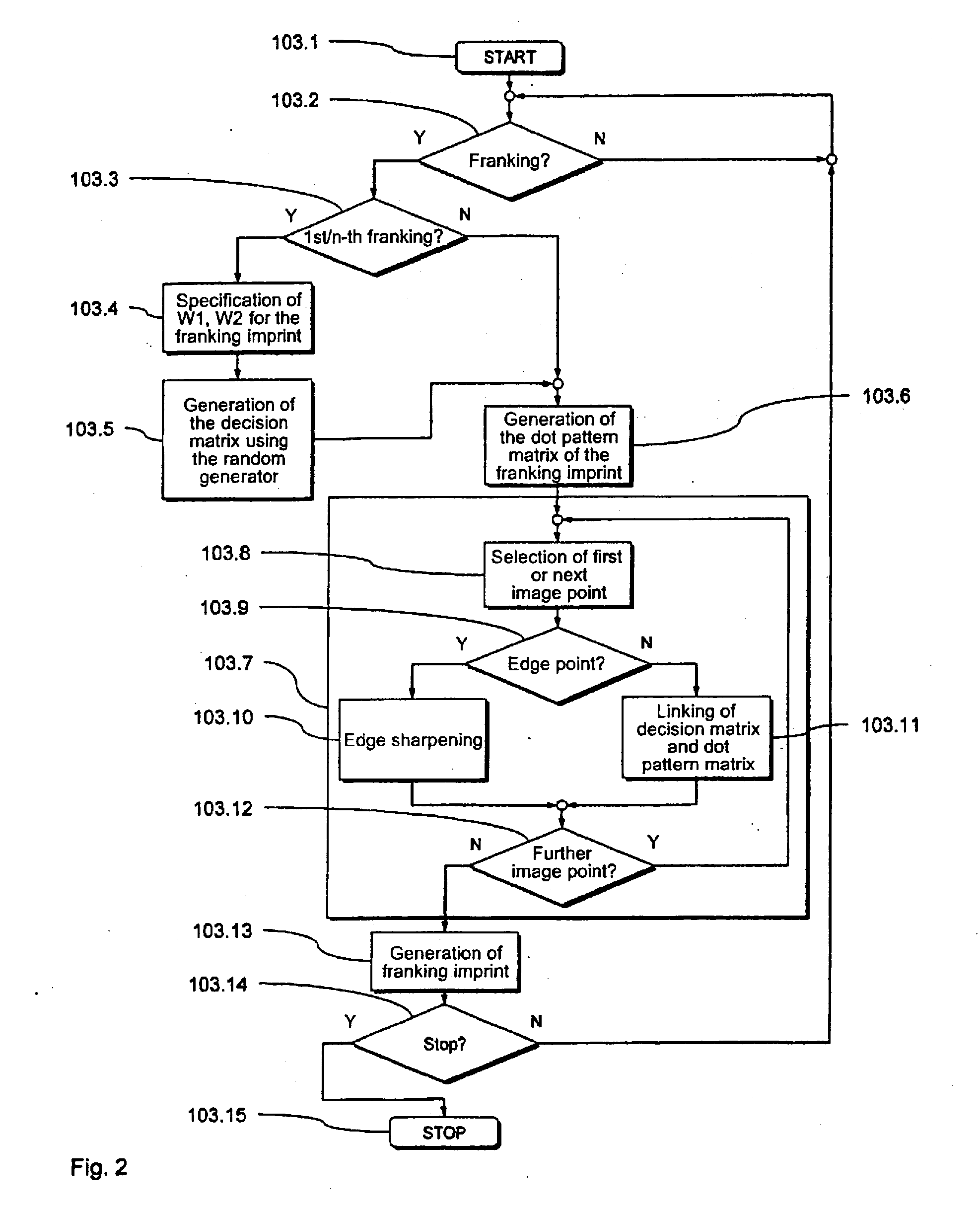Method and arrangement for generating a dot matrix imprint
a technology of imprint and dot matrix, which is applied in the field of imprint generation, can solve the problems of undesired and stripe pattern generation in the contour region, so as to reduce the required quantity of print media and avoid interfering regular pattern generation in the imprint
- Summary
- Abstract
- Description
- Claims
- Application Information
AI Technical Summary
Benefits of technology
Problems solved by technology
Method used
Image
Examples
Embodiment Construction
[0034] A preferred exemplary embodiment of the inventive franking machine 101 for generation of a franking imprint is shown in FIGS. 1 and 2, with which a preferred variant of the inventive method is implemented for generation of a franking imprint.
[0035] For generation of the franking imprint, the franking machine 101 comprises a preferred embodiment of the inventive arrangement 102 with a control device in the form of a processor 102.1 and a printing device 102.2 connected therewith. The printing device 102.2 has an inkjet print head, and thus operates according to a known dot matrix principle that need not be described herein in detail.
[0036] Controlled by the processor 102.1, the printing device 102.2 generates the franking imprint from a plurality of image points that it generates on a corresponding substrate (for example a letter) with individual ink droplets.
[0037] To generate the franking imprint, among other things the processor 102.1 accesses in a known manner imprint d...
PUM
 Login to View More
Login to View More Abstract
Description
Claims
Application Information
 Login to View More
Login to View More - R&D
- Intellectual Property
- Life Sciences
- Materials
- Tech Scout
- Unparalleled Data Quality
- Higher Quality Content
- 60% Fewer Hallucinations
Browse by: Latest US Patents, China's latest patents, Technical Efficacy Thesaurus, Application Domain, Technology Topic, Popular Technical Reports.
© 2025 PatSnap. All rights reserved.Legal|Privacy policy|Modern Slavery Act Transparency Statement|Sitemap|About US| Contact US: help@patsnap.com



